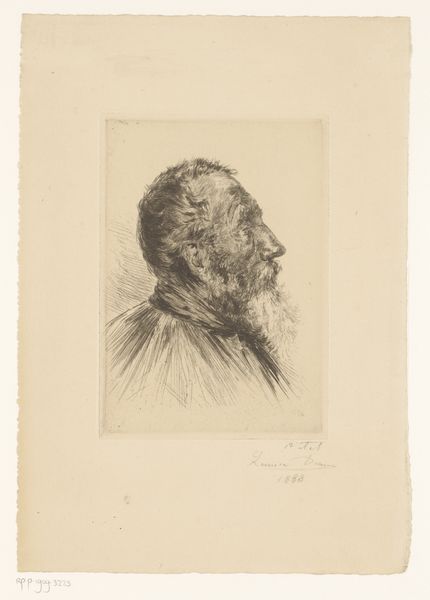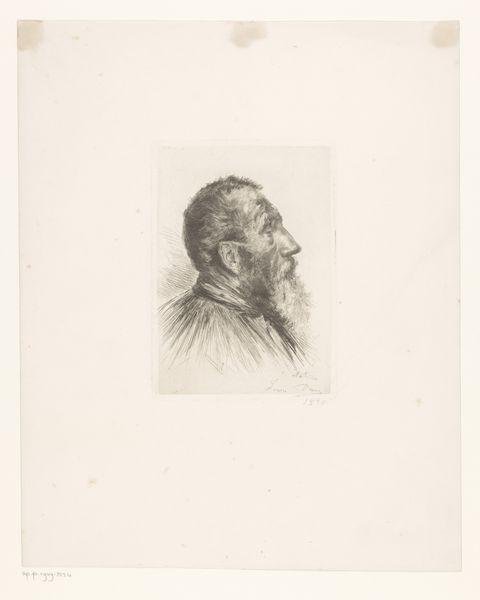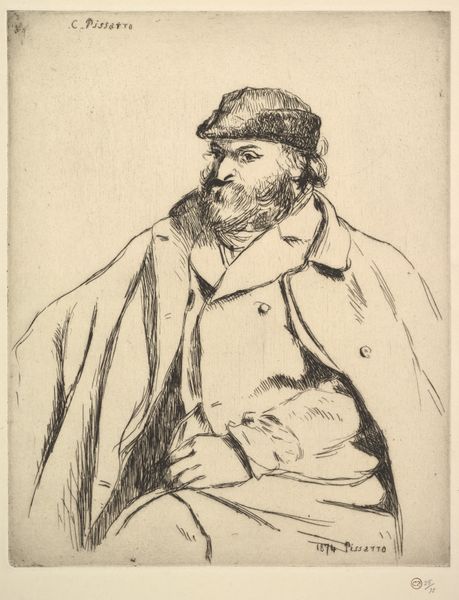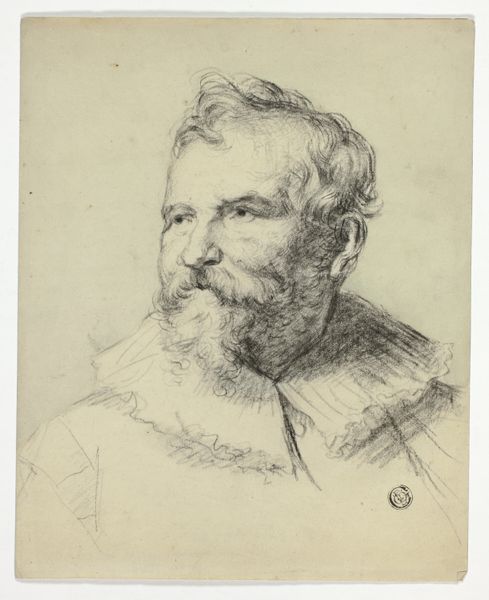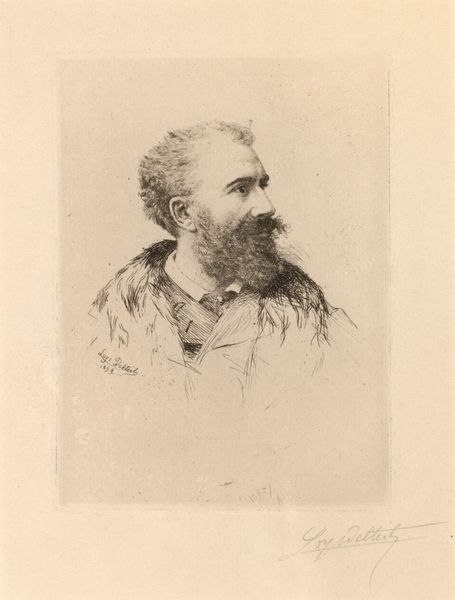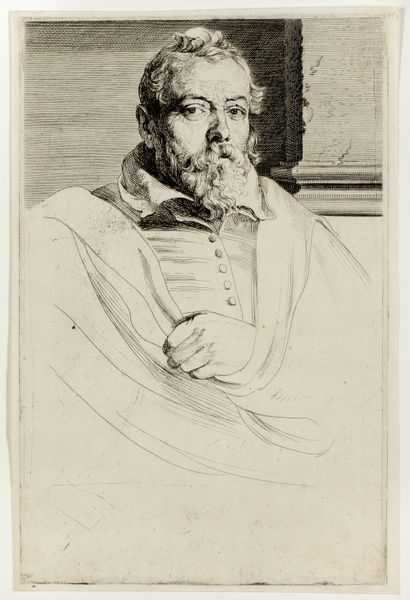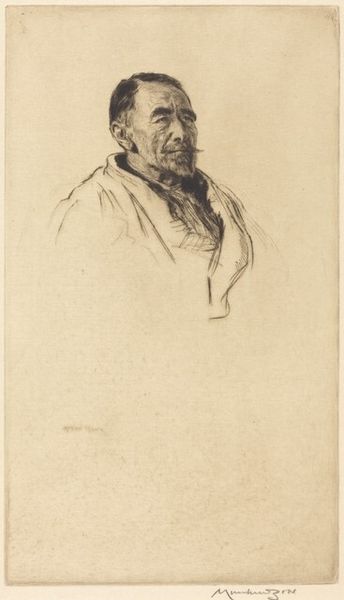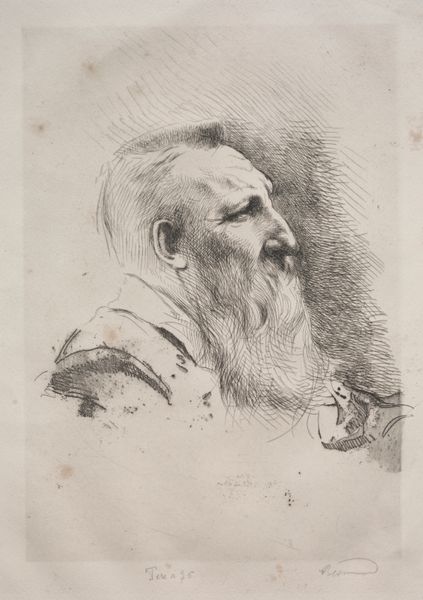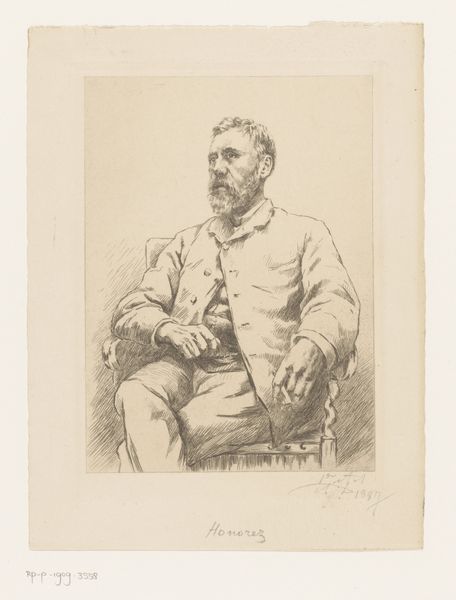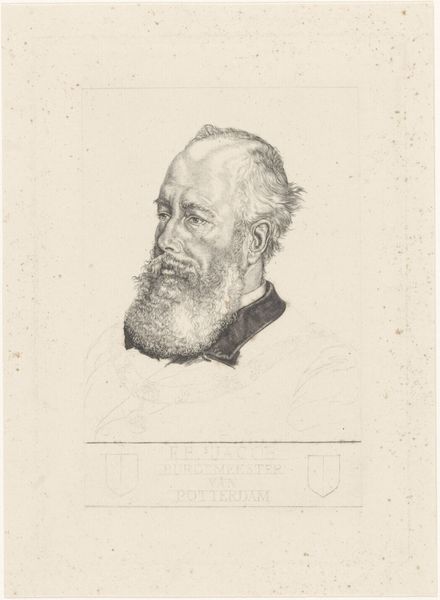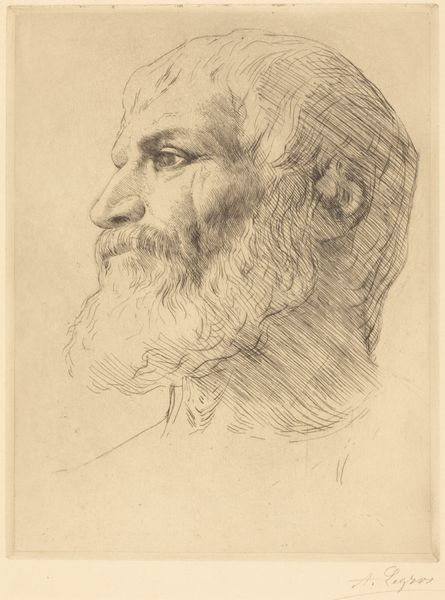
drawing, print, etching
#
portrait
#
drawing
# print
#
etching
#
portrait drawing
Copyright: National Gallery of Art: CC0 1.0
Curator: Let’s look at this etching by Alphonse Legros. It is simply entitled, "Val Prinsep, R.A." Editor: It's interesting—almost subdued, isn’t it? A casual, intimate study in sepia tones. The sitter seems relaxed, posed, but not overly formal. Curator: Indeed. Legros, known for his dedication to etching and printmaking, has captured Prinsep with a certain depth, which is more than just a rendering of his likeness. What strikes you about its creation? Editor: Well, look at the layering and fineness of the etched lines. The detail achieved, especially in the beard and hair, shows a master craftsman at work. The conscious build-up of textures hints at an immense skill, it gives presence. It’s a compelling example of the etching process. I also notice how it seems to celebrate material comfort and how it's made easily available with mass production of artworks as prints. Curator: Yes, but it is more complex. There's a vulnerability, and weariness about Prinsep's gaze. The piece challenges assumptions of masculine authority and explores identity. You might find it speaks to contemporary discourses around class, gender, and representation, through a feminist perspective. Editor: I appreciate your take on the socio-political interpretation, but it’s also important to highlight that these prints democratized art ownership. It made art more accessible, not only representing society but actively circulating within it as a consumer good. Curator: That is very true, the tension between its availability and nuanced observation does reflect a complexity. And I find how those ideas relate to issues still alive today extremely stimulating. Editor: I concur, Legros gives us the pleasure of a quiet moment, and offers avenues of interpreting art that makes us reflect on our world, too.
Comments
No comments
Be the first to comment and join the conversation on the ultimate creative platform.
